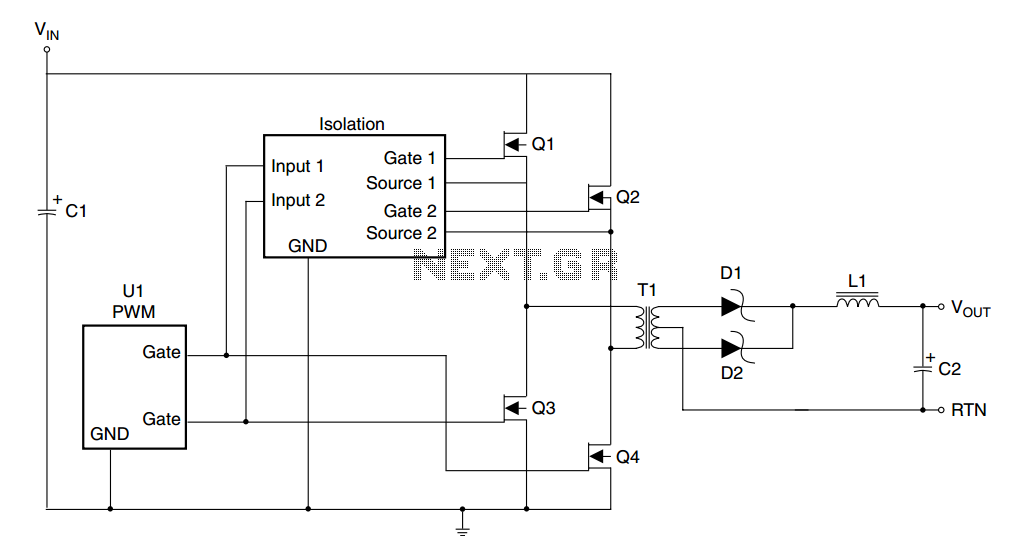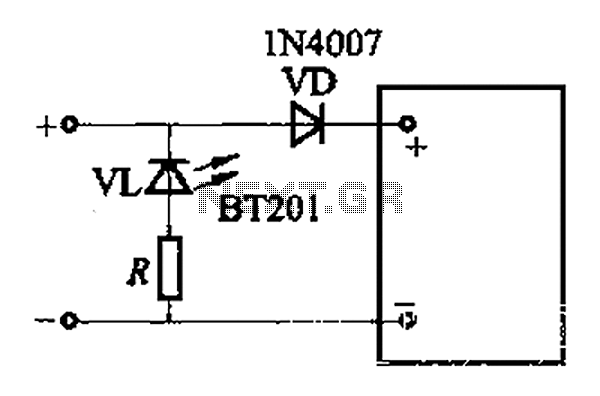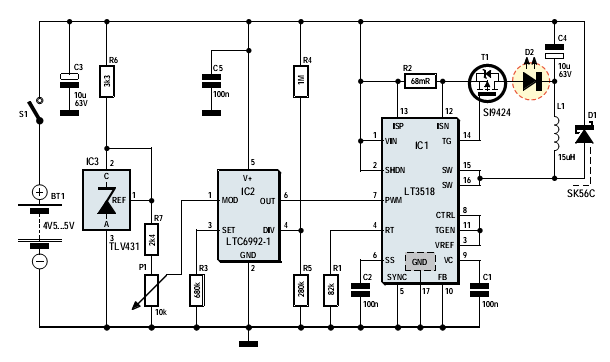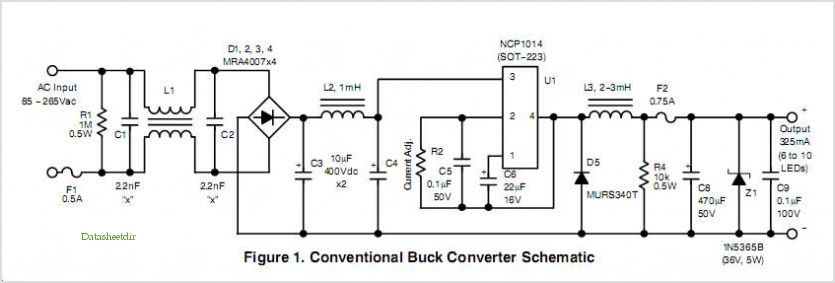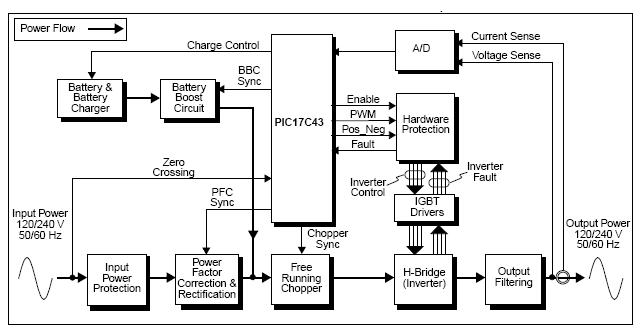
POWER MOSFET INVERTER
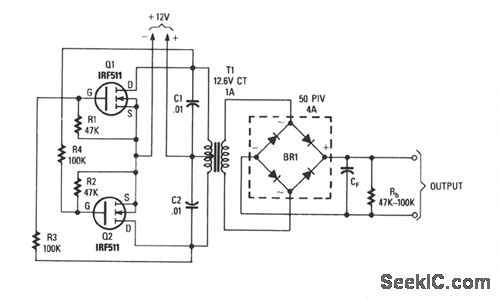
This inverter is capable of delivering high-voltage AC or DC, utilizing a rectifier and filter, with outputs reaching several hundred volts. The transformer T1 features a power rating of 12.6 to 440 V, with the primary and secondary windings reversed; thus, the primary acts as the secondary and vice versa. Transistors Q1 and Q2 may be any suitable power FETs, and it is essential to ensure that Q1 and Q2 are adequately heat-sinked. Capacitors C1 and C2 function as spike suppressors.
The inverter circuit described is designed to convert low-voltage DC into high-voltage AC or DC, suitable for various applications requiring high voltage. The use of a transformer with reversed windings allows flexibility in voltage conversion, enabling the circuit to adapt to different input and output voltage requirements.
The power FETs, Q1 and Q2, are critical components in the inverter's operation, acting as switching devices that control the flow of current through the transformer. Proper thermal management is crucial for these transistors, as they can generate significant heat during operation. The inclusion of heat sinks is necessary to maintain their operational integrity and prevent thermal failure.
Capacitors C1 and C2 play a vital role in protecting the circuit from voltage spikes, which can occur due to the rapid switching of the FETs. These capacitors help to smooth out fluctuations in voltage and provide stability to the output, ensuring that the inverter operates reliably under varying load conditions.
Overall, this inverter circuit is a robust solution for applications requiring high-voltage output, combining effective voltage transformation with essential protective features to enhance performance and reliability. Proper selection of components and attention to thermal management are key factors in optimizing the circuit's functionality.This inverter can deliver high-voltage ac or dc, with a rectifier and filter, up to several hundred volts. The secondary and primary of T1-a 12. 6 to 440 V power transformer, respectively-are reversed; e. g. , the primary becomes the secondary and the secondary becomes the primary. Transistors Q1 and Q2 can be any power FET. Be sure to heat sink Q1 a nd Q2. Capacitors C1 and C2 are used as spike suppressors. 🔗 External reference
The inverter circuit described is designed to convert low-voltage DC into high-voltage AC or DC, suitable for various applications requiring high voltage. The use of a transformer with reversed windings allows flexibility in voltage conversion, enabling the circuit to adapt to different input and output voltage requirements.
The power FETs, Q1 and Q2, are critical components in the inverter's operation, acting as switching devices that control the flow of current through the transformer. Proper thermal management is crucial for these transistors, as they can generate significant heat during operation. The inclusion of heat sinks is necessary to maintain their operational integrity and prevent thermal failure.
Capacitors C1 and C2 play a vital role in protecting the circuit from voltage spikes, which can occur due to the rapid switching of the FETs. These capacitors help to smooth out fluctuations in voltage and provide stability to the output, ensuring that the inverter operates reliably under varying load conditions.
Overall, this inverter circuit is a robust solution for applications requiring high-voltage output, combining effective voltage transformation with essential protective features to enhance performance and reliability. Proper selection of components and attention to thermal management are key factors in optimizing the circuit's functionality.This inverter can deliver high-voltage ac or dc, with a rectifier and filter, up to several hundred volts. The secondary and primary of T1-a 12. 6 to 440 V power transformer, respectively-are reversed; e. g. , the primary becomes the secondary and the secondary becomes the primary. Transistors Q1 and Q2 can be any power FET. Be sure to heat sink Q1 a nd Q2. Capacitors C1 and C2 are used as spike suppressors. 🔗 External reference
